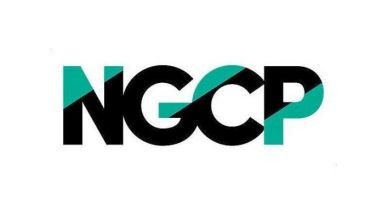Comm’l bank lending up 3.9%
November 17, 2003 | 12:00am
The Bangko Sentral ng Pilipinas (BSP) reported a marginal improvement in commercial bank lending last September, with loans of the commercial banking sector increasing by 3.9 percent to P1.47 trillion.
The BSP said the September performance marked 13 straight months of continued but gradual growth.
Data from the BSP show that commercial banks have increased their lending to manufacturing by 7.3 percent year-on-year after declining by two percent in the previous month when the concentration was on agriculture, fisheries and forestry.
According to the BSP, the manufacturing sector accounted for 24.6 percent of total commercial bank loans in September as the sector posted a seven-percent growth in volume of production index (VOPI) in the same month.
The BSP said there was also a sustained increase in capacity utilization of the manufacturing industry, up from 74.3 percent last year to this year’s 78.4 percent. This indicates that manufacturing companies a approaching the point where they will need to expand their capacities and borrow from banks to finance it.
The BSP also noted increases in commercial bank lending to community, social and personal services (9.6 percent); financial institutions, real estate and business services (2.8 percent) and transportation, storage and communications (1.1 percent).
The BSP said the year-on-year growth in the demand for bank loans was supported by the steady rise in credits to both the public and private sectors which rose by 15.3 percent and 3.2 percent respectively.
"The robustness in consumption spending as well as the gradual pick-up in manufacturing activities have contributed to higher demand for bank financing by firms," the BSP explained.
The shift in the banking sector’s NPL level, however, was met with skepticism by credit ratings agencies who said that the decline in NPL ratio had been due, not to the actual decline in bad loans but to the change in definitions that allowed banks to window-dress their portfolio.
In its most recent report on the Philippine banking industry, Moody’s Investors Service said it did not believe that the recent easing in reported non-performing loan (NPL) ratios indicated a fundamental improvement in asset quality.
"Instead, the lower numbers are due to definitional changes," said Moody’s analyst John Tham said.
Since September 2002, bad loans which are fully provided for have been excluded from the computation of NPL ratios, causing an artificial decline in NPLs.
"In fact, the moderate rise in foreclosed assets and restructured loans – which are reported separately – may imply a short-term weakening in borrowers’ debt-servicing capabilities," Tham said.
On the whole, Tham said the outlook on the Philippine banking system was dim primarily because of the negative outlook on the country’s overall currency ratings which pulled down its expectations on Philippine banks.
Moody’s said the banking industry is also on shaky grounds because of the weakness in a number of undercapitalized banks and banks that are under rehabilitation which Tham said could cause destabilization.
The BSP said the September performance marked 13 straight months of continued but gradual growth.
Data from the BSP show that commercial banks have increased their lending to manufacturing by 7.3 percent year-on-year after declining by two percent in the previous month when the concentration was on agriculture, fisheries and forestry.
According to the BSP, the manufacturing sector accounted for 24.6 percent of total commercial bank loans in September as the sector posted a seven-percent growth in volume of production index (VOPI) in the same month.
The BSP said there was also a sustained increase in capacity utilization of the manufacturing industry, up from 74.3 percent last year to this year’s 78.4 percent. This indicates that manufacturing companies a approaching the point where they will need to expand their capacities and borrow from banks to finance it.
The BSP also noted increases in commercial bank lending to community, social and personal services (9.6 percent); financial institutions, real estate and business services (2.8 percent) and transportation, storage and communications (1.1 percent).
The BSP said the year-on-year growth in the demand for bank loans was supported by the steady rise in credits to both the public and private sectors which rose by 15.3 percent and 3.2 percent respectively.
"The robustness in consumption spending as well as the gradual pick-up in manufacturing activities have contributed to higher demand for bank financing by firms," the BSP explained.
The shift in the banking sector’s NPL level, however, was met with skepticism by credit ratings agencies who said that the decline in NPL ratio had been due, not to the actual decline in bad loans but to the change in definitions that allowed banks to window-dress their portfolio.
In its most recent report on the Philippine banking industry, Moody’s Investors Service said it did not believe that the recent easing in reported non-performing loan (NPL) ratios indicated a fundamental improvement in asset quality.
"Instead, the lower numbers are due to definitional changes," said Moody’s analyst John Tham said.
Since September 2002, bad loans which are fully provided for have been excluded from the computation of NPL ratios, causing an artificial decline in NPLs.
"In fact, the moderate rise in foreclosed assets and restructured loans – which are reported separately – may imply a short-term weakening in borrowers’ debt-servicing capabilities," Tham said.
On the whole, Tham said the outlook on the Philippine banking system was dim primarily because of the negative outlook on the country’s overall currency ratings which pulled down its expectations on Philippine banks.
Moody’s said the banking industry is also on shaky grounds because of the weakness in a number of undercapitalized banks and banks that are under rehabilitation which Tham said could cause destabilization.
BrandSpace Articles
<
>
- Latest
- Trending
Trending
Latest
Trending
Latest
Recommended
February 15, 2025 - 12:00am

























